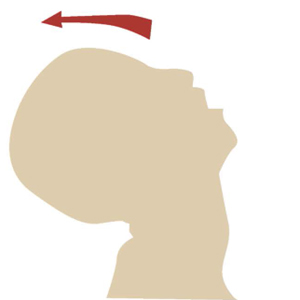Evidence-based work up and management of non-specific neck pain in the emergency department

Accepted: 18 November 2022
All claims expressed in this article are solely those of the authors and do not necessarily represent those of their affiliated organizations, or those of the publisher, the editors and the reviewers. Any product that may be evaluated in this article or claim that may be made by its manufacturer is not guaranteed or endorsed by the publisher.
Neck pain has become a commonly encountered complaint in the emergency department and primary care office. A large proportion of the population, ranging from a fifth (⅕) to a third (⅓) of the total, will experience non-specific neck pain in their lifetime. Because of the difficulty to quickly parse out the differential and the severity of several of these diagnoses, it is imperative for physicians in the emergency department to establish a systematic and effective approach for evaluating nonspecific neck pain. This article will present a standardized case of a patient presenting with nonspecific neck pain, critically analyze current evidence and guidelines from major ruling bodies in internal medicine, neurology, neurosurgery, and radiology, examine major statements released by the Choosing Wisely Campaign, and propose a new diagnostic decision tree for the management of nonspecific neck pain.
2. Genebra, C., Maciel, N. M., Bento, T., Simeão, S., & Vitta, A. (2017). Prevalence and factors associated with neck pain: a population-based study. Brazilian journal of physical therapy, 21(4), 274–280. https://doi.org/10.1016/j.bjpt.2017.05.005
3. Kriss TC, Kriss VM. Neck pain. Primary care work-up of acute and chronic symptoms. Geriatrics. 2000 Jan;55(1):47-8, 51-4, 57. PMID: 10659073
4. Siu, V. J., Varkey, T., Khan, U. N., Ding, J. B., & Gandhi, S. (2021). Lend Me a Hand: A Value-Based Care Case Study on Pan Plexopathy of Unknown Origin.
5. Kazeminasab, S., Nejadghaderi, S.A., Amiri, P. et al. Neck pain: global epidemiology, trends and risk factors. BMC Musculoskelet Disord 23, 26 (2022). https://doi.org/10.1186/s12891-021-04957-4
6. Finucane LM, Downie A, Mercer C, Greenhalgh SM, Boissonnault WG, Pool-Goudzwaard AL, Beneciuk JM, Leech RL, Selfe J. International framework for red flags for potential serious spinal pathologies. J Orth Sports Phys Ther 2020; 50(7): 350-372.
7. Binder A. I. (2008). Neck pain. BMJ clinical evidence, 2008, 1103
8. Bogduk N. (1984). Neck pain. Australian family physician, 13(1), 26–30.
9. Blanpied PR, Gross AR, Elliott JM, et al. Neck Pain: Revision 2017. J Orthop Sports Phys Ther. 2017;47(7):A1-A83. doi:10.2519/jospt.2017.0302
10. Oliva-Pascual-Vaca, Á., González-González, C., Oliva-Pascual-Vaca, J., Piña-Pozo, F., Ferragut-Garcías, A., Fernández-Domínguez, J. C., & Heredia-Rizo, A. M. (2019). Visceral Origin: An Underestimated Source of Neck Pain. A Systematic Scoping Review. Diagnostics (Basel, Switzerland), 9(4), 186. https://doi.org/10.3390/diagnostics9040186
11. Hoffman JR, Mower WR, Wolfson AB, Todd KH, Zucker MI. Validity of a set of clinical criteria to rule out injury to the cervical spine in patients with blunt trauma. National Emergency X-Radiography Utilization Study Group. N Engl J Med. 2000 Jul 13;343(2):94-9. doi: 10.1056/NEJM200007133430203. Erratum in: N Engl J Med 2001 Feb 8;344(6):464. PMID: 10891516.
12. Leonard JC, Kuppermann N, Olsen C, Babcock-Cimpello L, Brown K, Mahajan P, Adelgais KM, Anders J, Borgialli D, Donoghue A, Hoyle JD Jr, Kim E, Leonard JR, Lillis KA, Nigrovic LE, Powell EC, Rebella G, Reeves SD, Rogers AJ, Stankovic C, Teshome G, Jaffe DM; Pediatric Emergency Care Applied Research Network. Factors associated with cervical spine injury in children after blunt trauma. Ann Emerg Med. 2011 Aug;58(2):145-55. doi: 10.1016/j.annemergmed.2010.08.038. Epub 2010 Oct 29. PMID: 21035905.
Copyright (c) 2022 The Authors

This work is licensed under a Creative Commons Attribution-NonCommercial 4.0 International License.
PAGEPress has chosen to apply the Creative Commons Attribution NonCommercial 4.0 International License (CC BY-NC 4.0) to all manuscripts to be published.


 https://doi.org/10.4081/ecj.2022.10929
https://doi.org/10.4081/ecj.2022.10929







